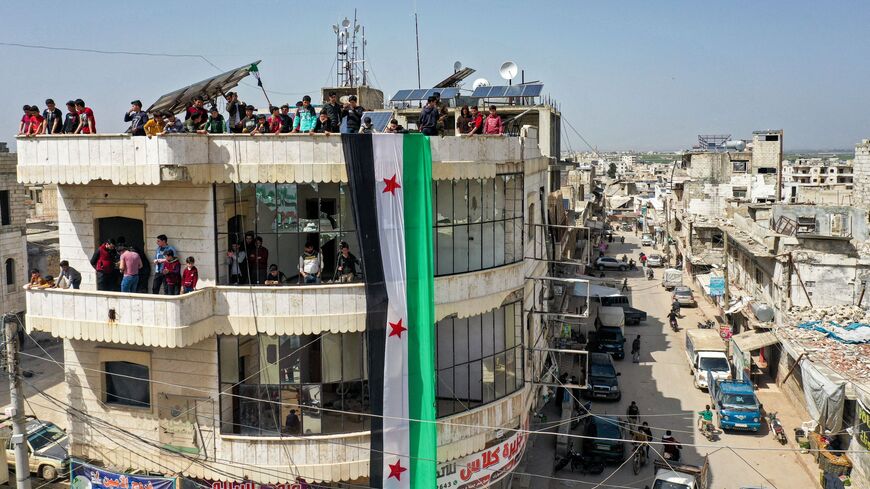US sends Patriots to Slovakia so Ukraine can get its anti-aircraft system: Pentagon
The Pentagon has been providing daily updates on the U.S. assessment of the Russian invasion of Ukraine and Ukraine's efforts to resist.
U.S. sending Patriot system to backfill Slovakia
After repeated pleas from Ukraine for help defending itself against Russian air strikes, Slovakia is sending its sole S-300 surface-to-air missile system to Ukraine, it announced Friday, and at the same time, the U.S. announced it is moving one of its Patriot missile batteries to Slovakia to replace it.
© Costas Metaxakis/AFP via Getty Images
"At my direction, and at the invitation of Slovakia, U.S. European Command will reposition one Patriot missile system, manned by U.S. service members, to Slovakia," Defense Secretary Lloyd Austin said in a statement Friday. "Their deployment length has not yet been fixed, as we continue to consult with the Slovakian government about more permanent air defense solutions."
There has been talk of such an arrangement since last month when Slovakian defense minister Jaroslav Nad’ said his country was ready to deliver its Soviet-era S-300 to Ukraine on condition Slovakia's air-defense capability be immediately backfilled.
"Should there be situation that we have a proper replacement or that we have a capability guaranteed for a certain period of time, then we will be willing to discuss the future of S-300 system," Slovakia's Prime Minister Eduard Heger said in a joint press conference with Austin on March 17.
A U.S. military Patriot battery based in Germany was pre-positioned in Poland for this purpose, and that system will soon be moving to from Poland to Slovakia to replace its S-300, according to a senior U.S. defense official.
The Slovak military has previously said it had about 45 missiles for its S-300 system.
US 'not buying' Russia's denial of hitting railway station

© Fadel Senna/AFP via Getty Images
The Pentagon is "not buying" Russia's denial of responsibility, a senior U.S. defense official said.
"They originally claimed a successful strike and then only retracted it when there were reports of civilian casualties," the official said. "It's our full expectation that this was a Russian strike -- we believe they used a short range ballistic missile, an SS-21."
Why might the Russians have targeted it?
The official said the station is a major rail hub in a "very strategic location," just south of the key city of Izyum.MORE: Russia-Ukraine live updates: Kremlin reacts to attack on Kramatorsk railway station
"And we've been talking now for days and days about how Izyum was so important to them because it lies almost in the middle of the Donbas," the official said.
Russian units 'eradicated'
Some of the Russian battalion tactical groups (BTGs) that have withdrawn back across the Belarusian and Russian borders have been essentially gutted from hard fighting in Ukraine, according to the senior defense official.

"We've seen indications of some units that are literally, for all intents and purposes, eradicated. There's just nothing left of the BTG except a handful of troops and maybe a small number of vehicles," the official said.
In terms of total losses -- counting troops, tanks, aircraft and missile inventory – Russia has lost between 15-20% of the combat power it originally had arrayed against Ukraine since the beginning of the invasion, according to the official.
Russia hoping to recruit 60,000 new troops
Some of the Russian forces withdrawn from around Kyiv and elsewhere are now heading to the Russian cities of Belgorod and Valuyki, to the northwest of Donbas. But there are "no indications" that fresh troops are waiting there to join them.
For now, degraded Russian BTGs, usually made up of roughly 800-1,000 troops, are "exploring the option of" consolidating, banding together remaining forces and supplies to form new units.
"It's really going to depend on the unit and how ready they are to get back into the fight, but we don't believe that in general this is going to be a speedy process for them given the kinds of casualties they've taken and the kind of damage that they've sustained to their to their units' readiness," the official said.
Russia is also aiming to recruit upwards of 60,000 new troops, according to the official.

© Felipe Dana/APA Ukrainian soldier stands amid destroyed Russian tanks in Bucha, Ukraine, April 6, 2022.
"They hope to get reinforced by new conscripts -- there's a whole new conscription schedule coming up here in May," the official said, adding that Russian conscripts serve for one year.MORE: Russia fully withdraws from Kyiv region, Ukrainians get drone training in US: Pentagon update Day 42
"It remains to be seen how successful they'll be on this, and where those reinforcements would go, how much training they would get," the official said.
Additionally, the U.S. sees indications Russia has begun mobilizing reservists.
After Russian BTGs rebuild, "the most likely course of action would be for them to move immediately south right into the Donbas," the official said.
The Pentagon estimates more than 40 Russian BTGs are already positioned in or near the Donbas region. The estimate was "more than 30" on Wednesday, meaning up to 10,000 more troops have arrived in recent days.
ABC News' Luis Martinez contributed to this report.
‘We’re sending S-300 SAMs to the citizens of Ukraine’ – Slovakia
BRATISLAVA, ($1=0.92 Euros) — Slovakia is sending its S-300 anti-aircraft missile systems to Ukraine and “its innocent citizens, believing that this system will help save the lives of as many innocent Ukrainians as possible,” Slovak Prime Minister Eduard Heger wrote in a Facebook post.

- Germany sends to Ukraine ex-East German IFVs based on Soviet BMP-1
- German Strela-2 MANPADS for Ukraine had cracks in the fuel charge
- Cyprus might send Mi-35 helos, T-80 tanks, TOR or BUK SAMs to Ukraine
BulgarianMilitary.com recalls that on March 20, Slovakia received Patriot systems from NATO members Germany and the Netherlands, which were deployed in Slovakia to strengthen the country’s air defense. Slovak officials then announced that the deployment of these air defense systems was not a substitute for their S-300s. Slovakia expressed a desire in March to provide its air defense systems only if it receives an equivalent from Western partners.
The White House later announced that the United States was sending its own S-300 air defense systems, purchased during the Cold War and the collapse of the Soviet Union. BulgarianMilitary.com has learned that these systems have not yet arrived in Ukraine.
Last week, the White House announced that the deployment of Slovak S-300 air defense systems to Ukraine “is under negotiation.” An agreement has apparently been reached between the United States and Slovakia, and the European country will likely acquire American Patriot systems. It remains unknown in what form this acquisition will take place. Will the United States “donate” Patriot systems in exchange for S-300s leaving for Ukraine, or will Washington make a huge concession to Bratislava to buy new systems?

There is a third possibility, and that is with Germany. It is no secret that Germany is upgrading its existing Patriot systems to the last possible level, as we wrote earlier, and that it is looking for opportunities to increase its army’s combat capability against long-range missiles. In this case, Germany may agree to leave the deployed Patriot systems in Slovakia and also receive a huge return from subsequent orders to the United States and Israel.
Prime Minister Eduard Heger said Slovakia had given its S-300 air defense system to Ukraine to help defend itself against Russian attacks.
2022 Russian invasion of Ukraine
On 21 February 2022, the Russian government claimed that Ukrainian shelling had destroyed an FSB border facility on the Russia Ukraine border, and claimed that it had killed 5 Ukrainian soldiers who tried to cross into Russian territory. Ukraine denied being involved in both incidents and called them a false flag.
On the same day, the Russian government formally recognized the self-proclaimed DPR and LPR as independent states, according to Putin not only in their de-facto controlled areas, but the Ukrainian Oblasts as a whole, and Putin ordered Russian troops, including tanks, to enter the regions.

On 24 February 2022, Russian President Vladimir Putin ordered an invasion of Ukraine by Russian Armed Forces previously concentrated along the border. The invasion followed by targeted airstrikes of military buildings in the country, as well as tanks entering via the Belarus border.
Russia has so far not recognized the invasion of Ukraine as a “war”, although that is exactly what it is, claiming that it is a “special military operation”. According to the UN, in which Russia has its permanent representation, for military action to be defined as a “special military operation”, it must have a resolution issued by the UN. There is no such resolution, which automatically defines the military actions of the Russians as an invasion and war against the citizens of Ukraine.









